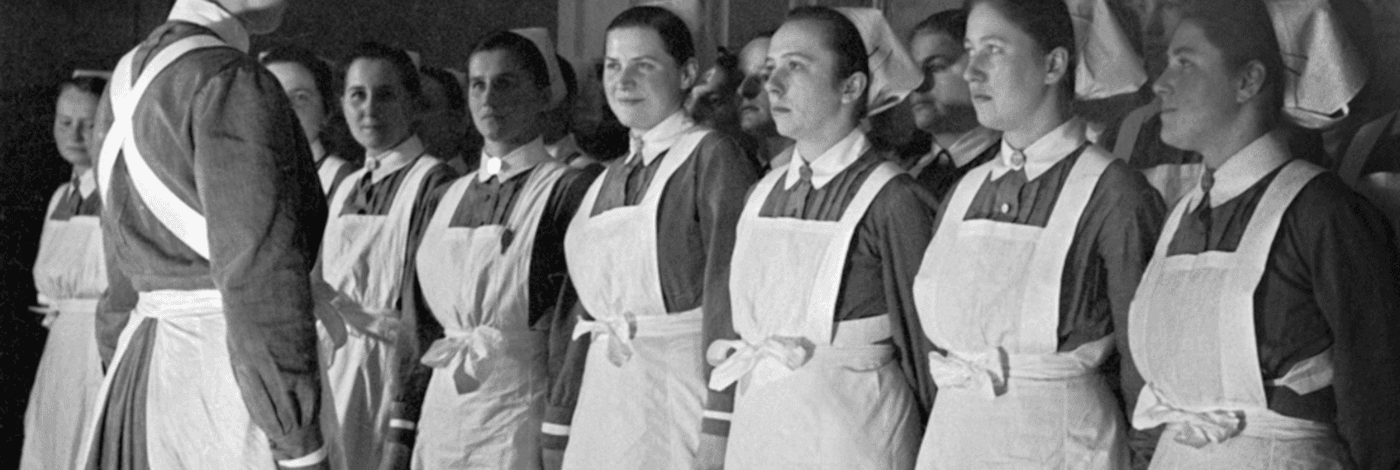Monday 23 December marked 100 years since the introduction of the Nurses Registration Act. Passed in 1919, the act made it a mandatory requirement to register in order to practice as a nurse in Britain.
It permanently changed modern British nursing, introducing training and regulation standards that remain today. But how much is known about it?
How did the act come about?
Before Florence Nightingale’s rise to fame in the Crimean War, hospital nurses were an ad-hoc workforce, with no national nursing curriculum or state examinations. It wasn’t until the 1858 Medical Act was passed, which provided statutory registration for doctors, that senior nurses began to lobby for nurse registration too.
Ethel Gordon Fenwick (or Ethel Bedford Fenwick) led the movement, spending 32 years of her life campaigning for the introduction of a mandatory nursing register.
Appointed matron of St Bartholomew’s Hospital in 1881, Ethel believed that a nursing register would improve patient care, protect nurses from being exploited through low pay and poor working conditions, and allow nurses to develop a professional identity.
She was a formidable campaigner, using both the British Nurses’ Association - which Ethel formed in 1887 - and the Nursing Record as a mouthpiece.
Why did it take so long?
Although the Midwives Act was passed in 1902, it was another 17 years until the Nurses Registration Act achieved royal assent. This was because the campaign was fraught with infighting and opposition.
Some argued for a non-compulsory register, although nurses like Ethel argued this would just be a list of names and not improve the status of nursing. Hospital authorities were worried state-registered nurses would be more expensive, while others were concerned that giving nurses more autonomy would change their role in the hospital hierarchy.
Although many bills from different sides of the registration debate were rejected by parliament, eventually the Nurses Registration Act, presented by the health minister Dr Christopher Addison, was passed in 1919. The register finally opened two years later. Ethel was the first to sign it, becoming the first ever state-registered nurse in the UK.
How does it impact nursing today?
The passing of the act led to the creation of the General Nursing Council (GNC), with stringent entry requirements for those wishing to register. It validated a three-year training period, a national curriculum and state examinations. However, it had only registered 12,097 nurses by 1923.
The nursing shortage was a concern for successive governments, as well as the Royal College of Nursing (RCN). This worry led to the development of an assistant nurse role in the 1940s. Later, the 1979 Nurses, Midwives and Health Visitors Act provided a new statutory framework for nursing education. This fundamentally changed the face of nursing, replacing the GNC with the United Kingdom Central Council. In April 2002, this was superseded by the Nursing and Midwifery Council (NMC).
Today the NMC maintains the UK register of over 650,000 nurses – a big difference compared to the figures from Ethel’s time. With a UK-wide remit, the NMC remains the regulatory body for nursing, midwifery and health visitors, setting the standards for the structure and nature of pre-registration nursing programmes and education.
It’s important to celebrate Ethel’s legacy and her significant role in achieving the Nursing Registration Act, which ultimately led to the NMC. She helped transform the nursing profession, which has continued to evolve over the past 100 years.
If you’re looking for opportunities to advance your nursing career, or to recruit for a vacancy, contact your nearest Reed office.



